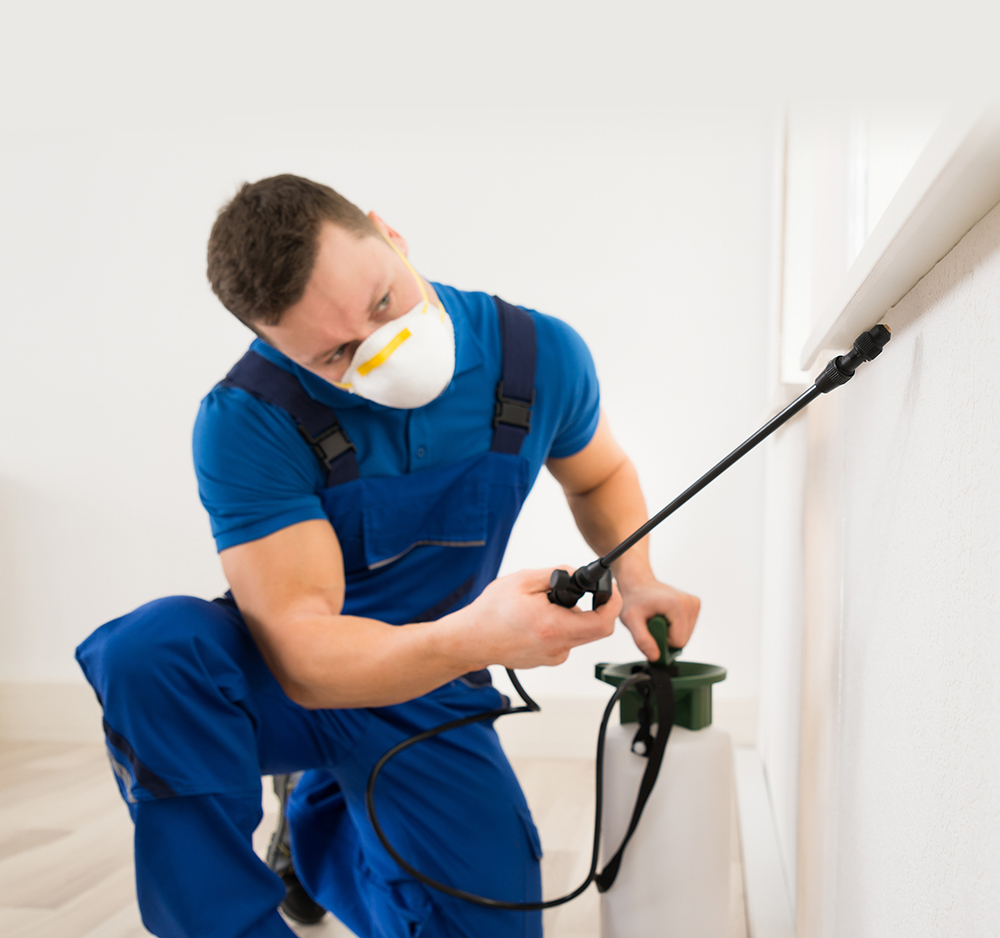Proven Bed Bug Heat Treatment: Remove Bed Bugs with Heat!
Wiki Article
Specialist Bug Control Techniques for Long-Term Results
In the world of bug control, achieving continual effectiveness and long-term outcomes requires a meticulous technique that transcends plain extermination. Specialist bug control techniques envelop a detailed strategy that starts with a complete assessment and assessment, adhered to by exact pest recognition to understand their behavior patterns. The implementation of Integrated Insect Management (IPM) principles, coupled with eco-conscious therapies, creates the cornerstone of lasting bug eradication. The true test exists in the recurring monitoring and maintenance of the dealt with locations, ensuring a pest-free atmosphere for the near future. By diving into the complexities of these methods, a much deeper understanding of professional insect control approaches for enduring results arises.Examination and Assessment
Upon entering a home for pest control services, the initial step is a comprehensive inspection and evaluation to recognize the extent of the infestation and identify one of the most effective treatment plan. Specialist pest control technicians are trained to carefully check out the premises, searching for indications of parasite task such as droppings, chomp marks, nests, or any architectural damages. They will certainly also analyze the problems that may be attracting pests, such as food resources, water leakages, or entry factors.
Parasite Recognition and Behavior

Furthermore, comprehending the behavior of the identified bug is vital to implementing efficient control procedures. As an example, understanding where insects nest, what they feed on, and their task patterns can aid pest control experts create techniques to eradicate them successfully. Some bugs may be nocturnal, while others are more energetic throughout the day. This understanding permits the application of therapies at ideal times for optimum performance.
Integrated Parasite Administration (IPM)
Integrated Parasite Administration (IPM) methods combine numerous techniques to manage and prevent parasite infestations in a lasting and environmentally pleasant manner. pest control. By integrating approaches such as biological control, habitat adjustment, modification great site of cultural methods, and using resistant ranges, IPM intends to minimize using chemical pesticidesAmong the key principles of IPM is the focus on avoidance. This proactive strategy involves tracking parasite populaces consistently to find any kind of prospective concerns before they rise. By determining pest issues beforehand, pest control measures can be executed promptly and effectively.
Furthermore, IPM promotes making use of safe parasite control methods whenever possible. This can include using natural killers of the parasites, introducing helpful insects, or utilizing scents to interrupt breeding patterns. By minimizing dependence on chemical pesticides, IPM not just secures the setting yet additionally aids maintain an equilibrium in the environment.
Environmentally-Friendly Treatments
Applying eco-conscious strategies in insect control treatments can efficiently address invasions while prioritizing environmental sustainability. Environmentally-friendly treatments concentrate on minimizing the influence of bug control techniques on environments, non-target you can try this out organisms, and human health. These approaches usually entail the use of natural killers, such as ladybugs or nematodes, to manage pest populations, reducing the demand for chemical treatments. Furthermore, techniques like environment adjustment, such as changing moisture levels or getting rid of food resources, can assist discourage insects without using harmful materials.Another secret aspect of environmentally-friendly therapies is making use of organic and eco-friendly items that damage down swiftly without leaving damaging residues in the atmosphere. Organic pesticides derived from plants like chrysanthemums or neem provide reliable parasite control while positioning marginal danger to non-target types. Employing methods like warm therapies or scent traps can target certain parasites with accuracy, minimizing the overall environmental influence of insect control practices.
Ongoing Monitoring and Maintenance
Normal examinations by skilled professionals are essential to identify any signs of insect task, assess the performance of previous treatments, and make adjustments to the pest control plan as required. By monitoring bug populations over time, insect control experts can track patterns, expect potential problems, and execute preventive procedures to reduce the danger of future problems.
Along with surveillance, maintenance practices are essential for lasting parasite control success. This includes carrying out proper hygiene measures to remove possible food and water resources for parasites, sealing off entrance factors to protect against bugs from look what i found going into the properties, and attending to any kind of architectural problems that can facilitate insect invasions (exterminator). By including continuous monitoring and maintenance right into an integrated parasite management approach, businesses can guarantee a pest-free environment and secure their home against expensive damage and health and wellness dangers
Conclusion
Finally, utilizing professional pest control techniques such as detailed examination and analysis, exact bug recognition and understanding of their actions, incorporated parasite administration strategies, environmentally-friendly treatments, and recurring tracking and upkeep are necessary for attaining lasting lead to parasite control. By carrying out these approaches, individuals can efficiently take care of pest invasions and maintain a pest-free environment in a sustainable manner.Report this wiki page